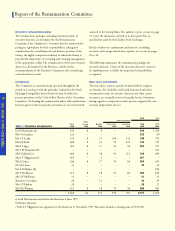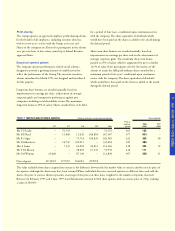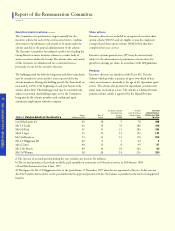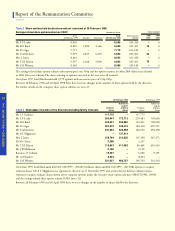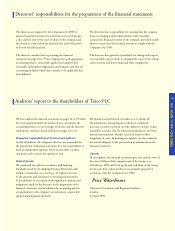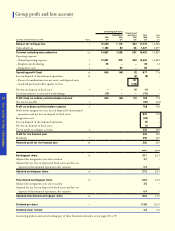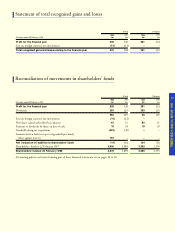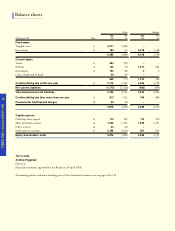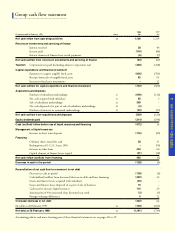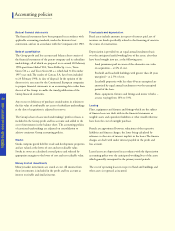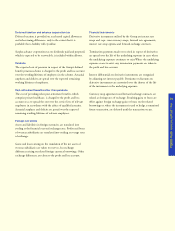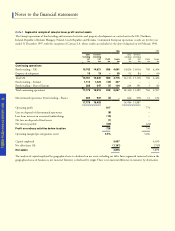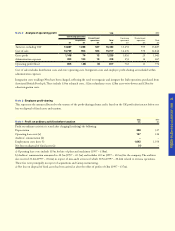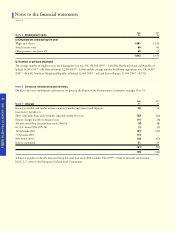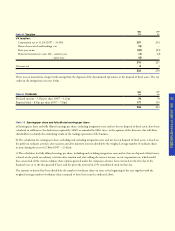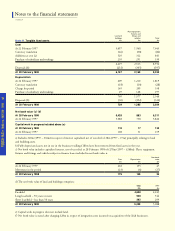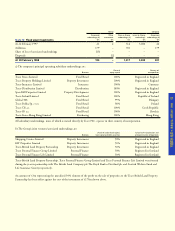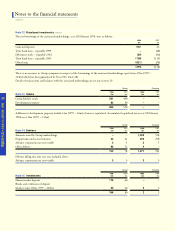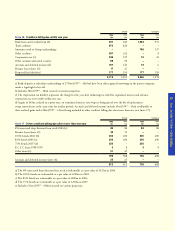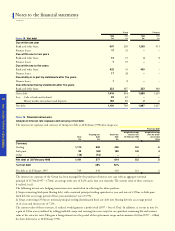Tesco 1998 Annual Report Download - page 22
Download and view the complete annual report
Please find page 22 of the 1998 Tesco annual report below. You can navigate through the pages in the report by either clicking on the pages listed below, or by using the keyword search tool below to find specific information within the annual report.
2 0
Basis of financial statements
The financial statements have been prepared in accordance with
applicable accounting standards, under the historical cost
c o n v ention, and are in accordance with the Companies Act 19 8 5 .
Basis of consolidation
The Group profit and loss account and balance sheet consist of
the financial statements of the parent company and its subsidiary
undertakings, all of which are prepared to or around 28 February
1998 apart from Global T.H., Tesco Polska Sp. z o.o., Tesco
Stores C
˘Ra.s. and Tesco Stores SR a.s. which had 31 December
1997 year ends.The results of Catteau S.A. have been included
to 24 February 1998, its date of disposal. In the opinion of the
directors it is necessary for the Continental European companies
to prepare financial statements to an accounting date earlier than
the rest of the Group to enable the timely publication of the
Group financial statements.
Any excess or deficiency of purchase consideration in relation to
the fair value of attributable net assets of subsidiary undertakings
at the date of acquisition is adjusted in reserves.
The Group’s share of associated undertakings’ profits or losses is
included in the Group profit and loss account and added to the
cost of investments in the balance sheet. The accounting policies
of associated undertakings are adjusted on consolidation to
achieve consistent Group accounting policies.
Stocks
Stocks comprise goods held for resale and development pro p e rt i e s ,
and are valued at the lower of cost and net realisable value.
Stocks in stores are calculated at retail prices and reduced by
appropriate margins to the lower of cost and net realisable value.
Money market investments
Money market investments are stated at cost. All income from
these investments is included in the profit and loss account as
interest receivable and similar income.
Fixed assets and depreciation
Fixed assets include amounts in respect of interest paid, net of
taxation, on funds specifically related to the financing of assets in
the course of construction.
Depreciation is provided on an equal annual instalment basis
over the anticipated useful working lives of the assets, after they
have been brought into use, at the following rates:
Land premiums paid in excess of the alternative use value
on acquisition – at 4% of cost.
Freehold and leasehold buildings with greater than 40 years
unexpired – at 2.5% of cost.
Leasehold properties with less than 40 years unexpired are
amortised by equal annual instalments over the unexpired
period of the lease.
Plant, equipment, fixtures and fittings and motor vehicles –
at rates varying from 10% to 33%.
Leasing
Plant, equipment and fixtures and fittings which are the subject
of finance leases are dealt with in the financial statements as
tangible assets and equivalent liabilities at what would otherwise
have been the cost of outright purchase.
Rentals are apportioned between reductions of the respective
liabilities and finance charges, the latter being calculated by
reference to the rates of interest implicit in the leases.The finance
charges are dealt with under interest payable in the profit and
loss account.
Leased assets are depreciated in accordance with the depreciation
accounting policy over the anticipated working lives of the assets
which generally correspond to the primary rental periods.
The cost of operating leases in respect of land and buildings and
other assets is expensed as incurred.
Accounting policies


